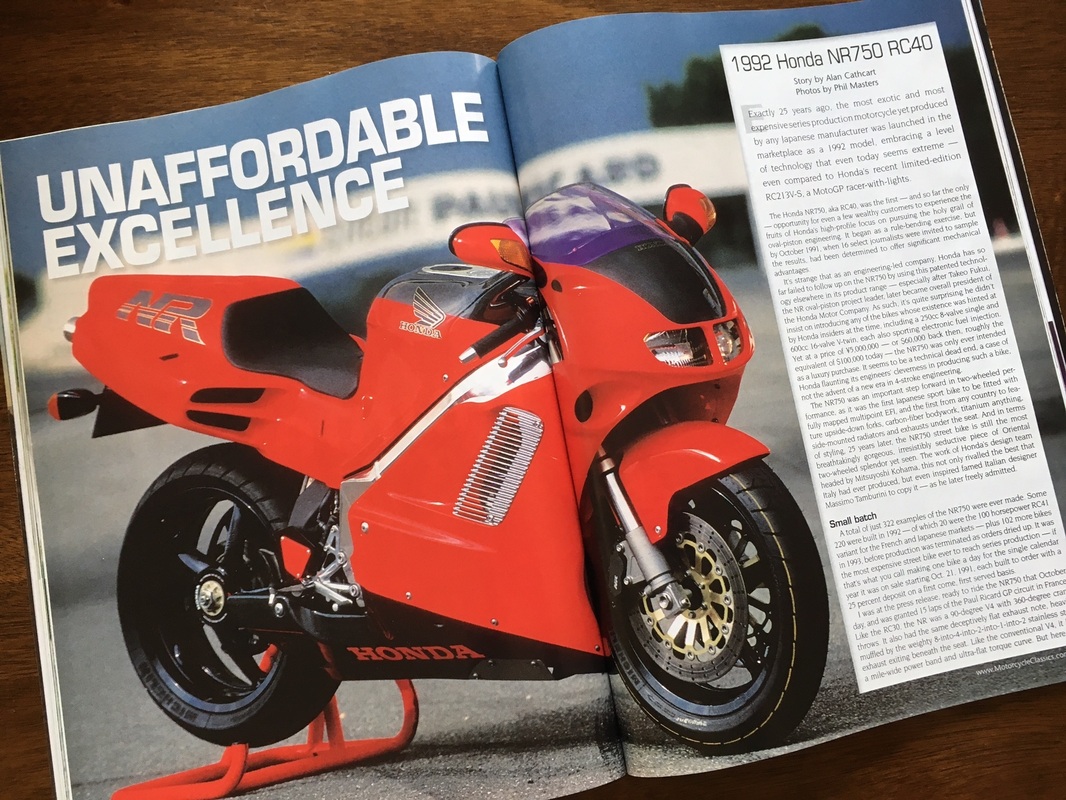His general impression was one of mild surprise that this much-hyped super hi-tech jewel was not the hard-edged Superbike he was anticipating, but rather an easy to ride, tractable, even comfortable, "ultimate real-world motorcycle." He states that the racetrack wasn't really the bike's proper venue, but that the NR "wasn't a razor-sharp race replica like the RC30, and though it was a lot more relaxing and comfortable to ride than one up to a certain level, beyond that it was more sport tourer than Superbike." It was, and maybe still is, the ultimate Gentleman's Express.
He also notes some of the NR's firsts: The first Japanese sport bike with fully mapped electronic fuel injection, the first anywhere with "upside down forks, carbon-fiber bodywork, titanium anything, side-mounted radiators and exhausts under the seat." He calls the styling "breathtakingly gorgeous" and, by his own admission, was copied by none other than the late master, Massimo Tamburini. You can surely see elements of the NR in Tamburini's Ducati Paso, 916, 996, 998, MV Augusta F4 and a few Bimotas. The design was also the basis for the fourth-gen VFRs, clearly visible in the look of my "new" '97 VFR750.
While Honda had hoped to make 1000 NRs, only 322 were produced in 1992 and '93. Each was built to order with a 25% deposit — first come, first served. The most expensive production motorcycle ever sold is now one of the most desired, and probably the least ridden. And that's a shame.

 RSS Feed
RSS Feed